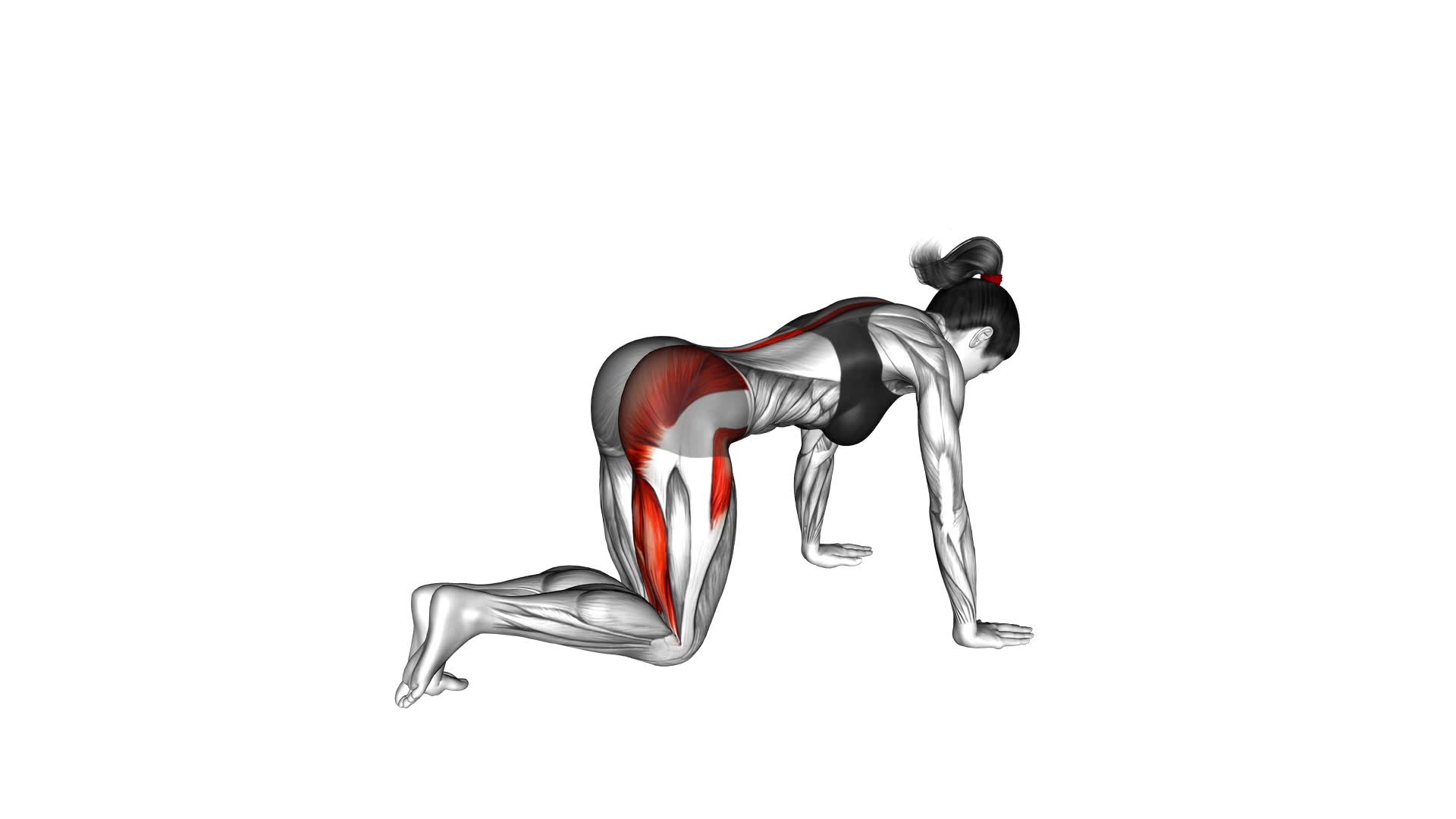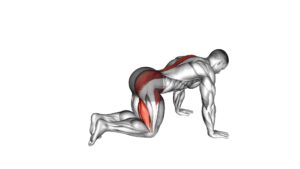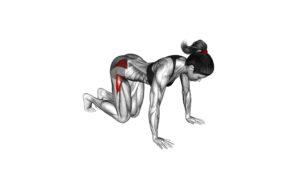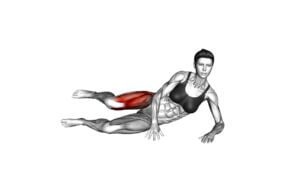Bent Knee Back to Side Kick (female) – Video Exercise Guide & Tips

Are you looking to strengthen your core and improve your balance?
Watch This Exercise Video
Then the Bent Knee Back to Side Kick is the exercise for you!
In this video exercise guide, we'll show you the proper technique and give you helpful tips to get the most out of this move.
Avoid common mistakes and learn how to increase flexibility and balance.
Get ready to kick your fitness routine up a notch with this challenging exercise!
Key Takeaways
- The Bent Knee Back to Side Kick improves kicking power and engages multiple muscle groups.
- Proper technique involves lifting the knee towards the chest, extending the leg out to the side, rotating the torso towards the kicking side, and bending the knee to kick the heel towards the glutes.
- Common mistakes to avoid include collapsing or hunching the upper body, not engaging core muscles, relying on momentum instead of controlled movements, and incorrect foot placement.
- To increase flexibility and balance, it is recommended to stretch regularly, strengthen the core, practice balance exercises, use stability equipment, and improve proprioception and control over body movements.
Benefits of the Bent Knee Back to Side Kick
To maximize your workout, incorporate the Bent Knee Back to Side Kick into your routine for its numerous benefits. This powerful kick isn't only great for improving your kicking power, but it also helps to incorporate the kick into a full body workout. By engaging multiple muscle groups, including your glutes, hamstrings, and core, this kick works to strengthen and tone your entire lower body.
One of the key benefits of the Bent Knee Back to Side Kick is its ability to enhance your kicking power. By targeting the glutes and hamstrings, this exercise helps to strengthen the muscles responsible for generating force during a kick. This increased strength translates into more power and speed in your kicks, making you a more formidable opponent in any martial arts or sports that involve kicking.
In addition to improving kicking power, the Bent Knee Back to Side Kick is an excellent way to incorporate the kick into a full body workout. This exercise requires you to engage your core muscles for stability and balance, while also working your glutes, hamstrings, and hip flexors. By involving multiple muscle groups, this kick helps to burn calories and increase overall strength and endurance.
Proper Technique for the Bent Knee Back to Side Kick
To properly execute the Bent Knee Back to Side Kick, follow these steps:
- Start by standing with your feet shoulder-width apart, knees slightly bent, and your hands on your hips.
- Lift your right knee up towards your chest, keeping your foot flexed and your core engaged.
- Extend your right leg out to the side, keeping it straight and parallel to the ground. At the same time, rotate your torso towards the right, leading with your left shoulder.
- As you bring your right leg back, bend your knee and kick your heel towards your glutes, while maintaining control and balance.
- Repeat the movement on the opposite side, alternating between right and left kicks.
Common mistakes to avoid when performing the Bent Knee Back to Side Kick include:
- Allowing your upper body to collapse or hunch forward during the kick.
- Not engaging your core muscles, which can lead to instability and poor form.
- Relying solely on momentum to perform the kick, instead of using controlled and deliberate movements.
Modifications for the Bent Knee Back to Side Kick can be made based on your fitness level and flexibility. You can decrease the range of motion by kicking to a comfortable height or using a support, such as a chair or wall, to assist with balance.
Additionally, you can increase the intensity by adding ankle weights or performing the exercise on a stability ball to challenge your core stability. Remember to always listen to your body and adjust the exercise as needed to prevent injury.
Common Mistakes to Avoid During the Bent Knee Back to Side Kick
Avoiding these common mistakes will help you perform the Bent Knee Back to Side Kick with proper form and effectiveness. It's important to be aware of these errors so that you can correct them and get the most out of your workout.
One common mistake isn't engaging your core muscles properly. To avoid this, make sure to tighten your abdominal muscles throughout the movement. This will help stabilize your body and provide the necessary support for the kick.
Another mistake to avoid is leaning too far forward or backward during the kick. This can throw off your balance and compromise the effectiveness of the exercise. Instead, focus on maintaining an upright posture and keeping your body aligned.
Lastly, be mindful of your foot placement. Placing your foot too close to your body or too far away can affect the power and range of motion of the kick. Aim to position your foot at a comfortable distance, allowing for a smooth and controlled movement.
Tips for Increasing Flexibility and Balance for the Bent Knee Back to Side Kick
Improve your flexibility and balance for the Bent Knee Back to Side Kick by incorporating these tips:
- Stretch regularly: Increasing flexibility is essential for executing the Bent Knee Back to Side Kick effectively. Incorporate regular stretching exercises into your routine, focusing on the muscles involved in the kick, such as the hamstrings, hip flexors, and glutes. Dynamic stretches like leg swings and lunges can help prepare your body for the kick, while static stretches like the standing hamstring stretch can improve flexibility over time.
- Strengthen your core: A strong core is crucial for maintaining balance during the Bent Knee Back to Side Kick. Incorporate exercises like planks, Russian twists, and bicycle crunches to strengthen your abdominal, oblique, and lower back muscles. A stable core will help you maintain proper form and stability throughout the movement.
- Practice balance exercises: Improving your balance is key to executing the Bent Knee Back to Side Kick with control and precision. Incorporate balance exercises like single-leg stands, yoga poses like the tree pose, or using a balance board or stability ball to challenge your stability. These exercises will help you develop better proprioception and control over your body's movements.
By incorporating these tips into your training routine, you can enhance your flexibility and improve your balance, setting yourself up for success with the Bent Knee Back to Side Kick.
Now, let's explore some variations and modifications for this kick to further challenge your skills and progress.
Variations and Modifications for the Bent Knee Back to Side Kick
To further challenge your skills and progress with the Bent Knee Back to Side Kick, there are various variations and modifications you can incorporate into your training routine. These variations and modifications can help you target different muscle groups, increase difficulty, and add variety to your workouts.
One variation you can try is the Straight Leg Back to Side Kick. Instead of bending your knee, keep your leg straight as you lift it back and then swing it out to the side. This variation increases the demand on your hip flexors and hamstrings, as well as your core stability.
Another modification is to add resistance. You can use ankle weights or resistance bands to make the exercise more challenging. By adding resistance, you're forcing your muscles to work harder and increasing the overall intensity of the exercise.
If you're looking to focus on your core strength, you can try performing the Bent Knee Back to Side Kick on a stability ball. By balancing on the ball, you're engaging your core muscles even more and challenging your balance and stability.
Remember to start with the basic Bent Knee Back to Side Kick and gradually progress to the variations and modifications as you become more comfortable and confident. Always listen to your body and modify as needed to avoid any discomfort or injury.
Frequently Asked Questions
How Long Should I Hold the Bent Knee Back to Side Kick Position?
To improve flexibility for the bent knee back to side kick, it's important to hold the position for an adequate amount of time. While there's no specific duration set in stone, aim to hold the kick position for at least 3-5 seconds. This will allow your muscles to engage and stretch properly.
Beginners can modify the exercise by starting with a lower kick height and gradually increasing it as they gain strength and flexibility.
Can I Perform the Bent Knee Back to Side Kick if I Have a Knee Injury?
Yes, you can still perform the Bent Knee Back to Side Kick exercise even if you have a knee injury. However, it's important to take certain precautions and modifications to ensure that you don't exacerbate your injury.
Rehabilitation exercises that focus on strengthening the muscles around the knee and improving stability can be helpful. It would be best to consult with a healthcare professional or a qualified trainer who can provide you with specific guidance tailored to your injury.
Is It Normal to Feel Discomfort in the Hip During the Bent Knee Back to Side Kick?
Feeling hip discomfort during the bent knee back to side kick isn't uncommon. This exercise puts strain on the hip joint, and if you have a knee injury, it can exacerbate the discomfort.
It's important to listen to your body and make modifications to protect your knee. Consider using a smaller range of motion or consulting with a fitness professional for alternative exercises that won't aggravate your hip or knee.
How Many Repetitions of the Bent Knee Back to Side Kick Should I Do in a Workout?
To determine the number of repetitions for the bent knee back to side kick, it's important to consider your fitness level and goals. Start with a moderate amount, such as 10-15 reps per side, and gradually increase as you become more comfortable and stronger.
Remember to focus on proper form and technique throughout the exercise. Incorporating this kick into your routine can improve hip mobility, strengthen the glutes, and enhance overall lower body strength.
Can I Incorporate Weights or Resistance Bands Into the Bent Knee Back to Side Kick Exercise?
Yes, you can incorporate weights or resistance bands into the bent knee back to side kick exercise. Adding weights or resistance bands can increase the intensity of the exercise and help you build strength and tone your muscles.
However, it's important to start with lighter weights or resistance and gradually increase as you feel comfortable. If you have knee injuries, it's advisable to consult a professional or modify the exercise to avoid putting excessive strain on your knees.
Conclusion
In conclusion, the Bent Knee Back to Side Kick is a highly effective exercise that targets the glutes, hips, and thighs. By following proper technique and avoiding common mistakes, you can maximize the benefits of this exercise.
Additionally, incorporating flexibility and balance exercises into your routine can help improve your overall performance.
Don't forget to explore variations and modifications to challenge yourself and keep your workouts interesting.
Get ready to kick your fitness routine up a notch with the Bent Knee Back to Side Kick!

Author
Years ago, the spark of my life’s passion ignited in my mind the moment I stepped into the local gym for the first time. The inaugural bead of perspiration, the initial endeavor, the very first surge of endorphins, and a sense of pride that washed over me post-workout marked the beginning of my deep-seated interest in strength sports, fitness, and sports nutrition. This very curiosity blossomed rapidly into a profound fascination, propelling me to earn a Master’s degree in Physical Education from the Academy of Physical Education in Krakow, followed by a Sports Manager diploma from the Jagiellonian University. My journey of growth led me to gain more specialized qualifications, such as being a certified personal trainer with a focus on sports dietetics, a lifeguard, and an instructor for wellness and corrective gymnastics. Theoretical knowledge paired seamlessly with practical experience, reinforcing my belief that the transformation of individuals under my guidance was also a reflection of my personal growth. This belief holds true even today. Each day, I strive to push the boundaries and explore new realms. These realms gently elevate me to greater heights. The unique combination of passion for my field and the continuous quest for growth fuels my drive to break new ground.







